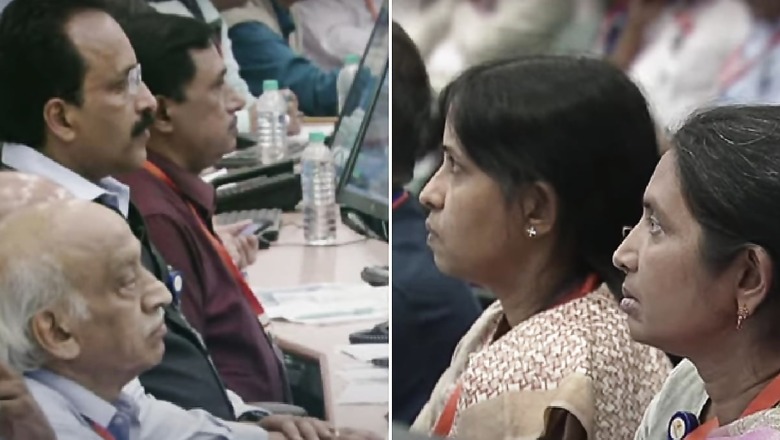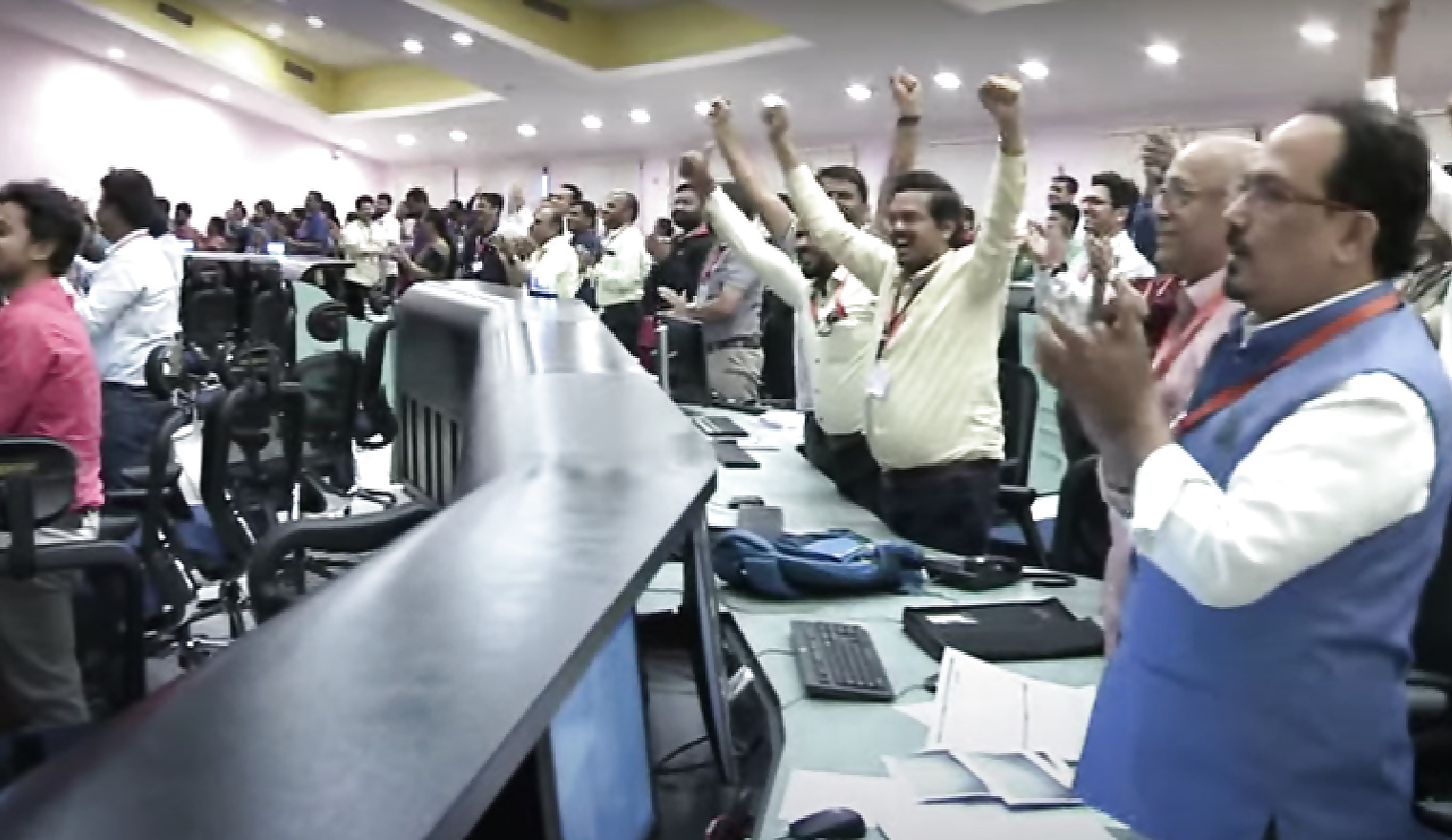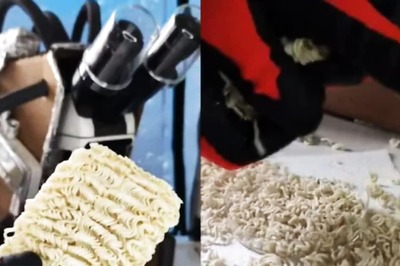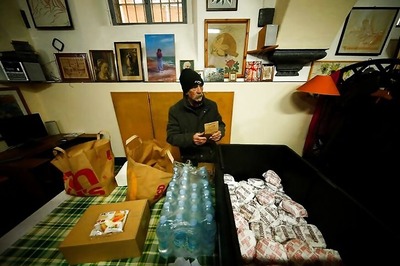
views
Eyes fixed on computer screens, hands held in support and an hour of bated breath — a tensed Indian Space Research Organisation hall sparkled brighter than fireworks in light shades of mostly blue, red and yellow. Beyond Chandrayaan-3’s success, there was more to Bengaluru’s ISRO Centre than met the eye.
The historic moment was not only about the Vikram Lander making a soft landing on the surface of the Moon, but the real stars of India who resonate with country’s hardworking and aspirational middle class.

Prime Minister Narendra Modi, earlier this year, had rightly said that the middle class “is a big force” behind India’s prosperity and development. And the ISRO scientists proved it on Wednesday evening.
They knew that they were going to create history on August 23, yet they chose plain shirts and cotton sarees over bling and designer-wear for the big day — a style of dressing any middle-class would relate to. “The next time someone calls saree a regressive attire, throw this picture on their face,” ‘X’ user SwatKat wrote on the micro-blogging site.
Motivated by the women in team ISRO, another ‘X’ user asked girls to take inspiration from the scientists. “Gol (round) rotis can wait,” she added.
Girls! Take inspiration from these beautiful women, Gol roti can wait. pic.twitter.com/rb67hnsJg3— Bhumika (@thisisbhumika) August 23, 2023
This isn’t the first time that the simplicity of the Indian scientists have caught people’s attention. Remember former ISRO chairperson Kailasavadivoo Sivan, who broke down in 2019 when Chandrayaan-2’s ‘Vikram’ Lander failed to touch down on the Moon’s surface?
He is the son of a farmer who studied in a local government schools in Tamil medium at Kanyakumari district of Tamil Nadu. Sivan is also is the first graduate in the family.
The former ISRO chief’s uncle, A Shunmugavel, had told a national daily that the rocket expert was “self-made, studious and hard working. He never went to any tuition or coaching classes.”
I still have that image in mind of Sivan crying. He was there too. #Chandrayaan3 is such a super example of inverting the problem and succeeding. ❤️???????? pic.twitter.com/2OhOmiz3ky— Rishi Bagree (@rishibagree) August 23, 2023
Later that year, Sivan won hearts when he travelled in economy class on an IndiGo flight. The ISRO scientist was given a warm welcome by the crew and passengers on board.
A video that had gone viral in 2019 showed Sivan taking selfie with the crew, following which he proceeded towards his seat while waving and smiling “shyly” at the passengers.
He is so shyly Happy, cute ????— Madhurima Ranjan ???????????????? (@MadhurimaRanjan) October 5, 2019
Know the Faces Behind Chandrayaan-3’s Success
S Somanath: He is the ISRO chief. Unconfirmed reports state that Somanath’s father was a Hindi teacher but he encouraged his son’s passion for science. He got him books related to science in both English and Malayalam. Somanath hails from Alappuzha (Alleppey) in Kerala.
The ISRO chief is considered the brains behind the ambitious mission to the Moon. He has also been credited with fast-tracking many other mission including Gaganyaan (crewed mission) and Aditya-L1 (mission to the sun).
Somanath has also served as the director of the Vikram Sarabhai Space Centre (VSSC) and the Liquid Propulsion Systems Centre — the primary centres for development of rocket technologies for ISRO.
P Veeramuthuvel: The 46-year-old scientist is the project director of the Chandrayaan-3 mission. Hailing from a small family in Tamil Nadu’s Villupuram district, PhD holder Veeramuthuvel is an alumnus of the prestigious Indian Institute of Technology, Madras. He succeeds Vanitha who was the project director of the Chandrayaan-2 mission under the leadership of then ISRO Chief K Sivan. Vanitha also became the first woman project director in ISRO’s history.
Mohana Kumar: He is the mission director for LVM3-M4/Chandrayaan 3, and a senior scientist from the Vikram Sarabhai Space Centre. Kumar earlier served as the director for the successful commercial launch of the One Web India 2 satellites on board the LVM3-M3 mission.
S Unnikrishnan Nair: He is the director of Vikram Sarabhai Space Centre (VSSC), the institute that developed the rocket ‘Geosynchronous Satellite Launch Vehicle (GSLV) Mark –III’, which was renamed as Launch Vehicle Mark-III. As the head of VSSC, Nair and his team were in charge of various key functions of the crucial mission.
M Sankaran: He is the director of U R Rao Satellite Centre. URSC is the lead centre in India for design, development and realisation of all satellites of ISRO. Sankaran took over as the director in June 2021. He is currently leading the satellite fraternity to meet the national requirements in the areas like communication, navigation, remote sensing, meteorology and inter-planetary exploration.
A Rajarajan: He is the chief of Launch Authorisation Board (LAB). Rajarajan is a distinguished scientist and currently the director of Satish Dhawan Space Centre SHAR (SDSC SHAR), Sriharikota, principal SpacePort of India. According to a leading daily, the scientist is an expert in the area of composites and as the director his priorities was on the fruition of solid motor production and launch complex infrastructure to meet ISRO’s increased demand of launches including launches for Human Space Programme (Gaganyaan) and SSLV.
K Kalpana: She is the associate project director of the Chandrayaan-3 mission. In the past, Kalpana has also worked on Chandrayaan-2 and Mangalyaan missions.
Besides Kalpana, 54 female engineers/scientists contributed to Chandrayaan-3, including Ritu Karidhal from Lucknow.



















Comments
0 comment